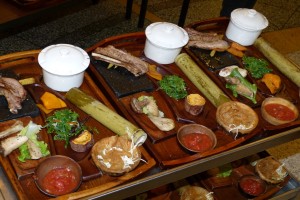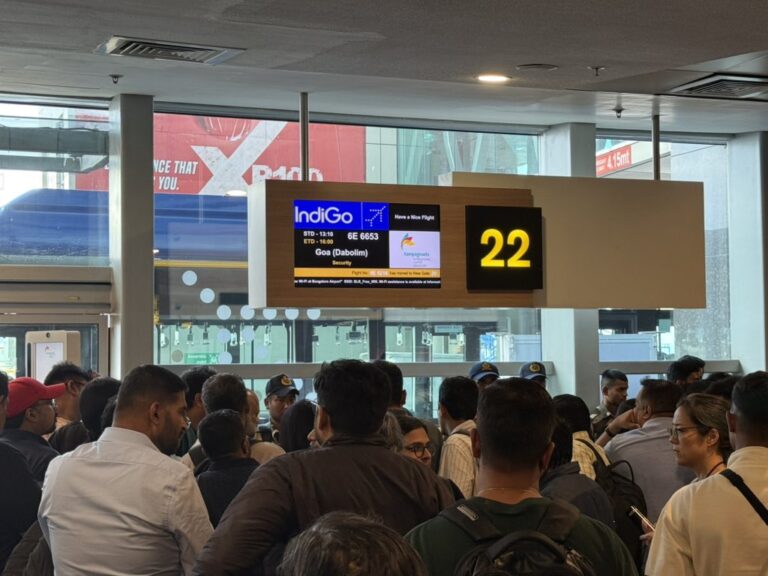
Rome: Indigenous Peoples are amongst the longest living cultures in the world. Even in the current COVID-19 context, they are able to rely on their traditional food systems to generate food and are coping better than other communities who rely on the market for their food needs. Their ways of life, cultures and knowledge systems have been passed on for centuries. They number 476 million persons worldwide, living in more than 90 countries and belonging to 5 000 different peoples and linguistic groups. Their territories encompass over a quarter of the world’s land surface, and intersect about 35 percent of all terrestrial protected areas and ecologically intact landscapes in the world.
Indigenous territories preserve and sustain 80 percent of the world’s remaining biodiversity. Researchers, academia and the international community have long investigated how and why indigenous territories are home to the highest percentage of biodiversity on the planet, and concluded that it is because of their profound connection to our territories and their traditional knowledge that they passed from parents to children for centuries.
They are amongst the most culturally diverse and traditionally unique societies on earth because of their rich history, culture, spirituality, unique ancestral links and tremendous traditional knowledge offering rich opportunities for food security and biosecurity preservation.
This all-encompassing richness in culture and traditions allows Indigenous Peoples to develop and sustain diverse and unique food systems. They generate hundreds of food items from the environment without depleting natural resources and achieve high levels of self-sufficiency. In the Solomon Islands, for example the MelanesiansSI people combine agroforestry, wild food gathering and fishing to generate 70% of their dietary needs. In Finland’s Arctic region, through fishing, hunting and herding, the Inari Sámi people generate 75% of the protein they consume. Today these systems are at high risk from climate change and the expansion of various industrial and commercial activities.
As Anne Nuorgam, Chair of the United Nations Permanent Forum on Indigenous Issues (UNPFII), wrote in the Foreword of a new study titled, Indigenous Peoples’ Food System, Insights of sustainability and resilience from the front line of climate change, “From reindeer herding to gathering wild plants and berries, Indigenous Peoples generate and collect food in complex, holistic and resilient ways whilst always respecting the need to preserve the biological diversity that generates and maintains harmony in nature. Eating and feeding but without destroying. Eating and feeding but maintaining biodiversity. Eating and feeding thanks to Mother Earth’s generosity that needs to be nurtured, protected and respected.”
Although Indigenous Peoples and their ecological based food systems have adapted and survived for centuries, pressures from extractive industries, intensive agricultural schemes, lack of access to natural resources, increasing environmental degradation, and drastic changes in climatic conditions are posing major threats to their livelihoods.
In nature, everything is alive and has an ultimate purpose and reason of being. This purpose, often overlooked in scientific assessments, is unfortunately better grasped when the plant or animal or berry has disappeared, and the balance is gone. “This is why the global community must listen and join forces with Indigenous Peoples and advocate for the preservation and safeguarding of Indigenous Peoples’ food systems before it is too late and the knowledge we hold, accumulated over hundreds of years, is gone forever,” writes Anne Nuorgam.
The Food and Agriculture Organization of the United Nations (FAO), together with the Alliance of Bioversity International and The International Center for Tropical Agriculture (CIAT) released today the new study identifying hundreds of diverse plant and animal species that Indigenous Peoples around the world depend on and care for to generate food sustainably and enhance biodiversity – and warning of increasing threats to these sophisticated food systems.
“Indigenous Peoples are and have always been dynamic innovators, learning from each other and developing a systemic approach, based on observation,” said FAO Director-General QU Dongyu, adding that “We must work with them, to learn and co-create knowledge for all of humanity”.
The new report represents collaborative work and field research with Indigenous Peoples’ organizations and research centers across the world. Its authors emphasize the urgent need for Governments and the international community to establish and enforce intercultural policies that support the efforts of Indigenous Peoples to protect their food systems.
“Despite surviving for centuries, Indigenous Peoples’ agri-food systems are likely to disappear in the next years due to a number of drivers threatening their future,” highlighted Juan Lucas Restrepo, Director-General of the Alliance of Bioversity-International and CIAT. Researchers must listen and learn from them to support efforts to maintain ancestral knowledge, he added.
Indigenous Peoples’ food systems analyzed in this publication include those belonging to the Baka people in Cameroon, the Inari Sámi people in Finland, the Khasi, Bhotia and Anwal peoples in India, the MelanesiansSI people in the Solomon Islands, the Kel Tamasheq people in Mali, the Tikuna, Cocama and Yagua peoples in Colombia, and the Maya Ch’orti’ in Guatemala.
These varied and unique systems combine different food generation techniques like hunting, gathering, fishing, pastoralism and shifting cultivation. Mobile practices, including nomadism, are vital to link food generation and production activities to natural cycles in a resilient way. Developed over millennia by Indigenous Peoples, such traditions enable habitats to recover and allow ecosystems to replenish themselves and provide fresh, nutritious and diverse foods.
“Being adaptive is the main resilient element of these food systems. Indigenous Peoples adapt their food generation and consumption to the seasonality and natural cycles observed in their surrounding ecosystems, not in the opposite way as most other societies do. Deep observation of the environment accumulated generation after generation and sharp understanding of the relationships between the elements in the ecosystem guarantee the protection of biodiversity”, said Anne Nuorgam.
The publication identifies the main internal and external drivers affecting Indigenous Peoples’ food systems and impacting on their future prospects and continuity as managers of intact ecosystems and stewards of land containing 80 percent of the biodiversity that remains.
“Indigenous Peoples’ food systems are game changers if acknowledged and protected as recent studies have also shown that in several areas zero hunger has been achieved,” said Phrang Roy, Founding Chair of NESFAS, based in Shillong, India.
The field research carried out by the local indigenous organizations was coordinated by the FAO Indigenous Peoples Unit and a scientific committee including indigenous and non-indigenous experts from the Alliance of Bioversity International and CIAT, Massey University, the Indigenous Partnership for Agrobiodiversity and Food Sovereignty (TIP), the French National Research Institute for Sustainable Development (IRD), the Mountain Partnership Secretariat, the Pastoralist Knowledge Hub and FAO technical divisions including Fisheries.
“We need more effective and creative interactions between indigenous knowledge and scientific knowledge systems. This is the only way we will achieve the agri-food system transformation that the world needs”, said Máximo Torero, FAO Chief Economist.
Through the Global-Hub on Indigenous Peoples’ Food Systems, FAO said it continues working with 18 Indigenous Peoples organizations and research centers to co-create knowledge and provide evidence about the uniqueness of indigenous peoples to generate food in sustainable, resilient and biodiversity-protecting ways through elaborate food systems, proving that producing food without destroying the environment is possible and offering lessons for all.
– global bihari bureau





